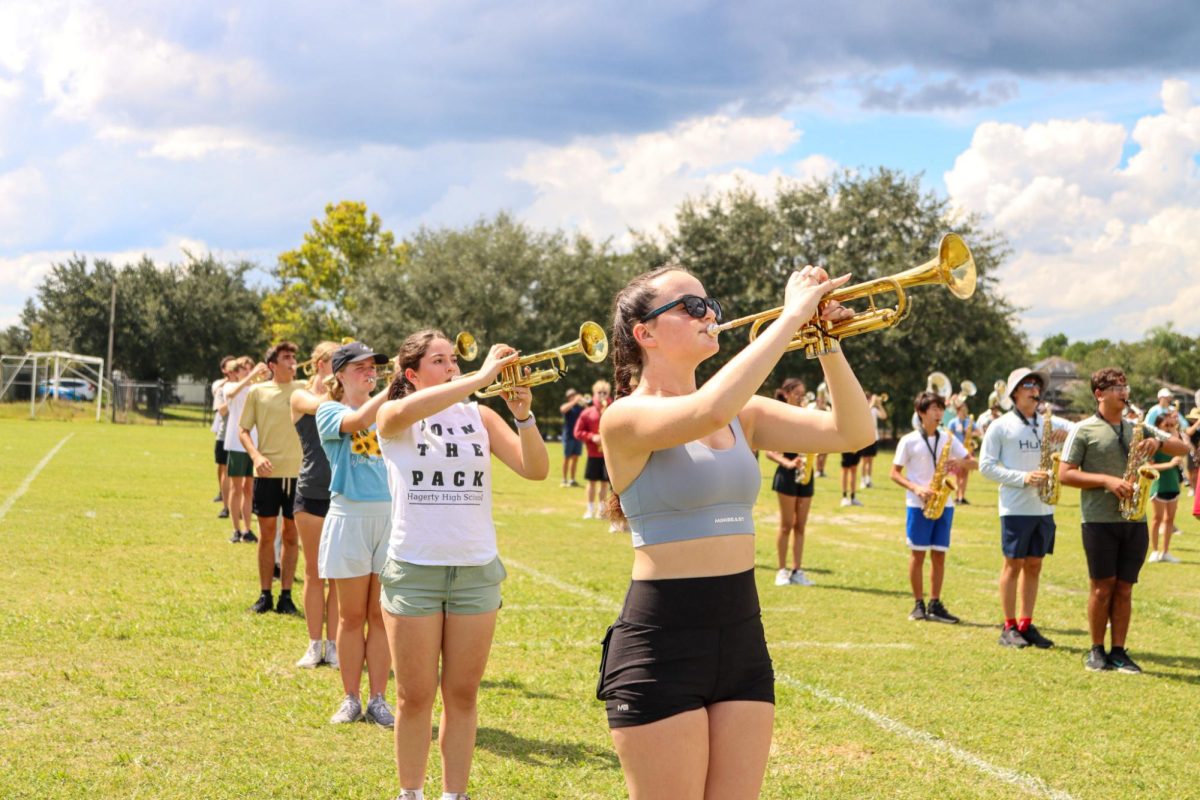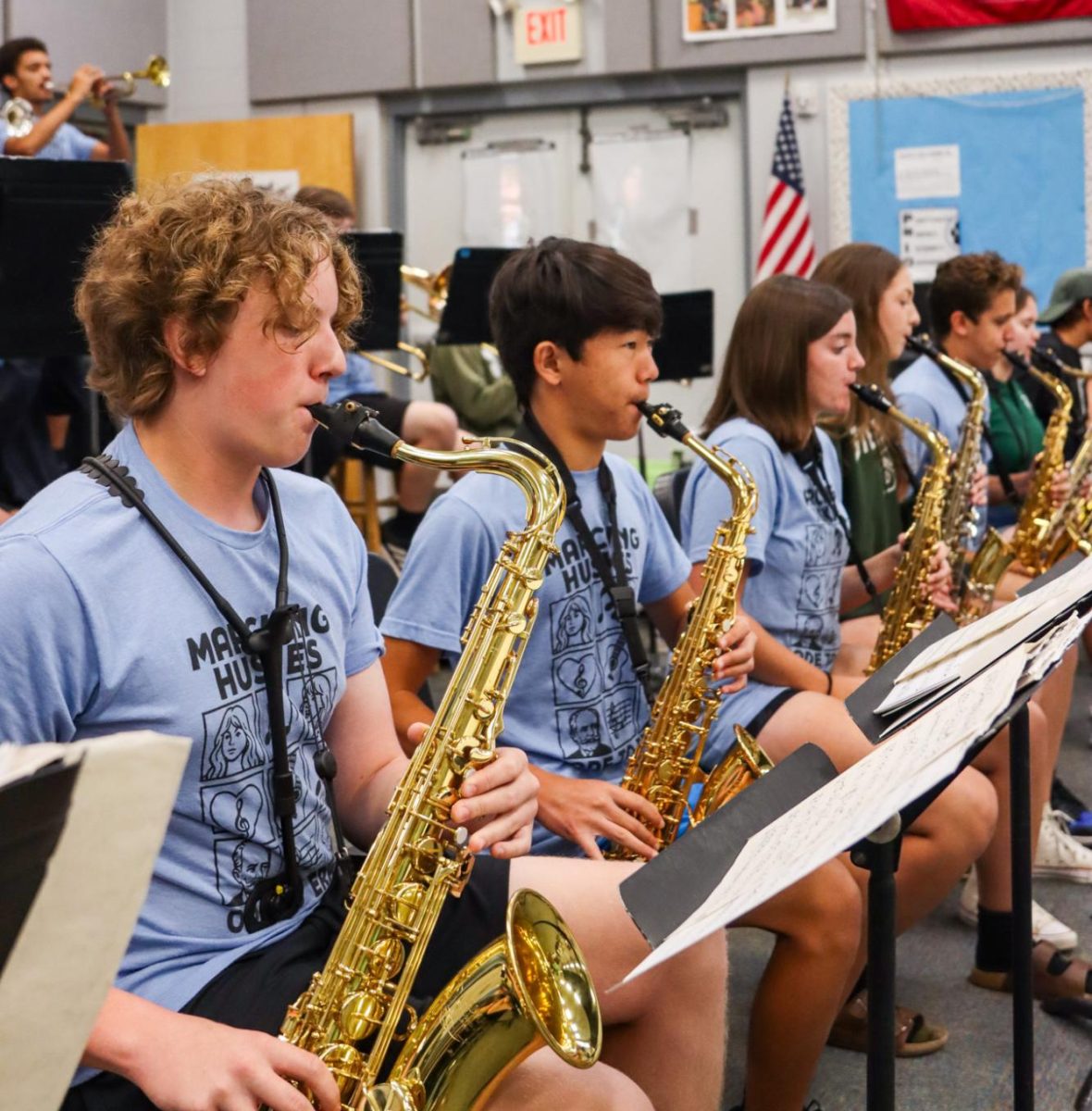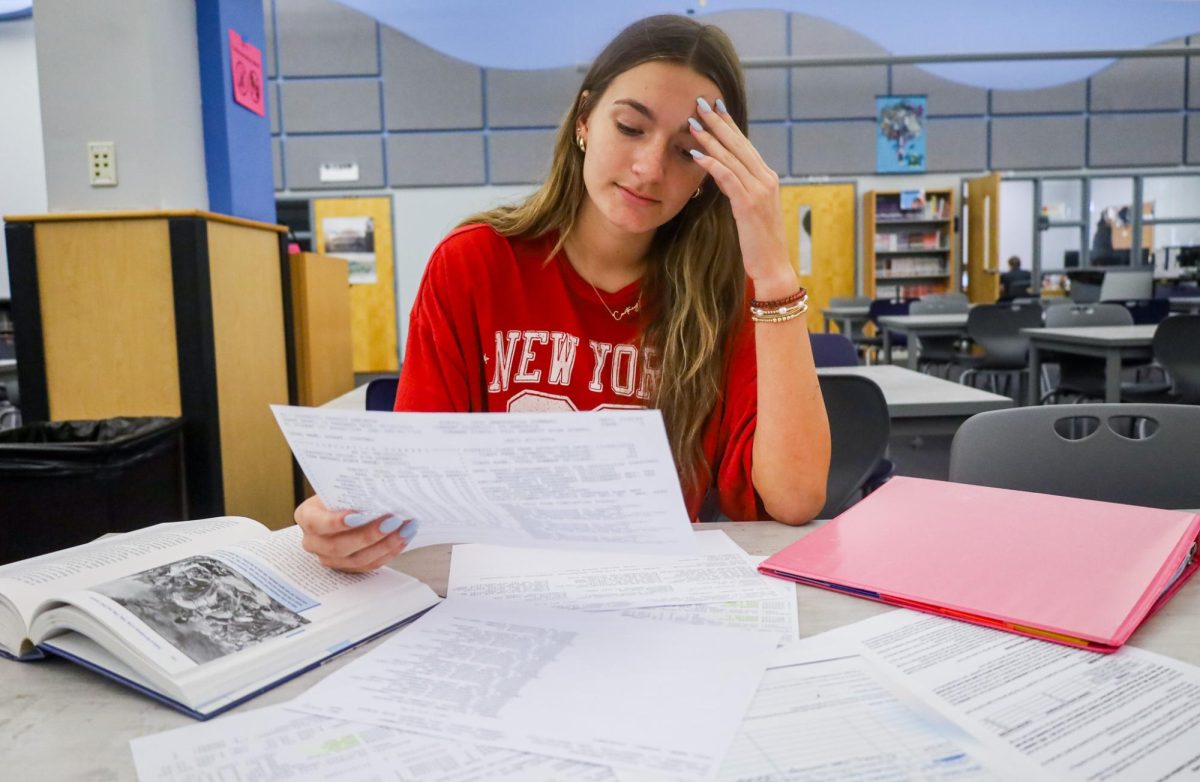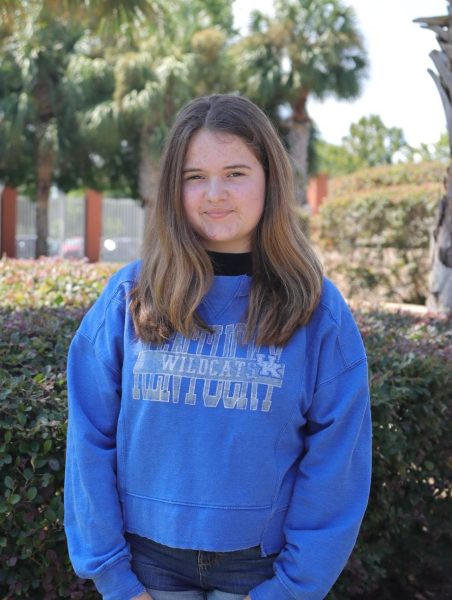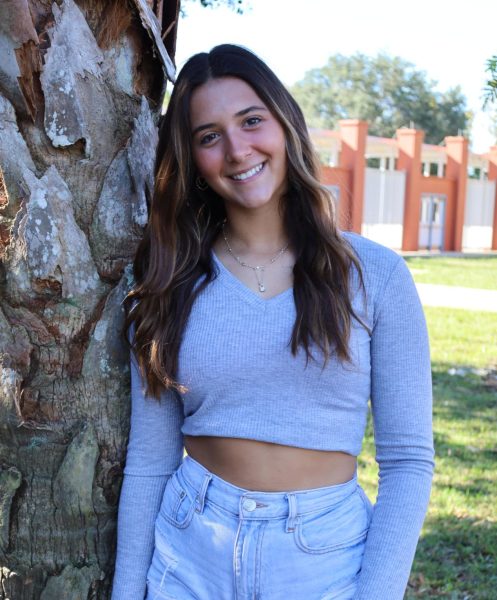Music… something that bonds and connects, no matter who or where you are. Whether it is streaming on your phone or playing on the speaker of your local grocery store, music is part of everyone’s lives.
At school, music continues to create tight-knit, supportive communities. The arts are a huge part of the school, divided into many musical programs, and the largest of these is band.
The school’s band is made up of three sections, divided into five different, individual bands. Ranging from classical to jazz, the number of students in each fluctuate, but it is true that an army of band kids roam the campus. With 187 band members, these musicians have a built-in group everywhere they look.
The program is led by band directors Brad Kuperman, known to students as Mr. Kuperman, and Brian Kuperman, known as Mr. K.
“I think [band] is a very welcoming community,” band president Lucas Swanson said. “I feel like it’s fairly easy to get to know people.”
The band program
Concert Band
Like any other program, band is built upon a hierarchy based on skill level, allowing for growth to show at their own level.
The beginner level, one most freshmen start at, is called Concert Band. This class, though mostly flooded with first-years, has a variety of grades. Upperclassmen often end up in this class when learning a new instrument, for instance.
Though this is considered the entry level of the band program, the students still participate in the activities of the two higher concert bands, such as marching band season and concert Music Performance Assessment.
Symphonic Band
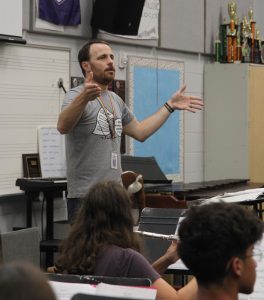
Symphonic band is the middle level of the concert bands and it is the largest and most diverse. Ranging from ninth graders (who auditioned from middle school and were recommended by their former band directors) to seniors.
“My favorite part of [Symphonic] band is getting to play different pieces through the year and just getting to meet other people in the band,” sophomore Makayla Flipse said.
Wind Ensemble
At the very top of the concert band hierarchy triangle is Wind Ensemble, a class that is filled with those ready for the challenge of the highest band.
“[In Wind Ensemble], you get to play with a lot of people that love [music] the same way you do,” sophomore Addison Talley said. “Being able to connect with them like that gives me so much excitement.”
Due to the pacing being quicker, the challenge is more extreme. The band is meant for those older and more experienced in music. There are mostly juniors and seniors in this class, but some advanced freshman and sophomores too, recommended by either their former band director or nodded to in their first year of high school band by the Kupermans themselves.
Jazz Two
Jazz, known for its swing and funk variety, is usually quicker paced and can easily keep the attention of the audience. Something that is quite evident in keeping the viewers intrigued is jazz soloing, which is a big part of each chart (music piece) and something that never happens with classical pieces.
“Jazz soloing is not like concert music,” freshman Linken Walker said. “You can actually express yourself in jazz, in your solos, and what you play reflects how you’re feeling in that moment.”
This is a contrast to the classical bands, which are known for their sophistication and delicacy. More instruments play in this style as well, not just the select few in Jazz One and Two.
The two jazz bands are the elite, and meant for the top players of the whole program. Therefore, the pace in both classes is quicker than the concert bands. Jazz Two is the lower band, however, and though students of all ages play in the class, sophomores and freshmen are most present.
Jazz One
Jazz One is considered the highest band at Hagerty, and is made up of mostly juniors and seniors. This class has members dedicated to perfecting the rhythm, tone and feel that define jazz.
Since this class is also different from that of regular concert bands, their concerts are performed on different dates.
“Jazz band is different from the other classes because it’s smaller and the instrumentation [is] smaller. There’s only so many different types of instruments,” Mr. K said. “[We] move a lot quicker in [jazz], so we’ll play the most music throughout the year.”
Their first concert, performed along with Jazz Two, happens in November, before the rest of the bands. Jazz concerts continue through the rest of the school year, and they even have their own Music Performance Assessment, where each band performs in front of judges.
Marching band

Though many people may not realize it, marching band has been a tradition from country to country since the medieval era. At first used to boost morale in troops, the idea of it was created by an Eastern European army and quickly spread throughout the world.
So today, the tradition continues, and the influence of the marching band is still quite evident in the school’s culture. While not an actual class, any student in one of the band classes is automatically part of the marching band in the fall.
“[Our goal] is to get the crowd excited and then to provide entertainment at halftime,” Mr. K said. “But it does a lot more. [It] also builds a lot of camaraderie, because we’re just around each other a whole lot.”
Band camp starts two weeks before the first day of school, and members begin rehearsal to prepare for competitions and the year ahead. Long days in the summer heat meet them each year, yet they continue, helping the incoming freshman who are not used to the new step in music. When school starts, students have practice each Tuesday and Thursday outside on the field. They set movement for each part of their yearly show, adding music to each step.
Then, on Fridays, the band joins the Hagerty football team and performs in the stadium stands, playing short stand tunes to ramp up the audience and cheer on the team.
Additionally at these sporting events, the band performs during halftime. This is when they show off their marching show for the year, both for entertainment and preparation for the marching band MPA.
Marching season comes to an end in the last week of October or early November with their designated MPA. Though this marks an end to one season, it marks the beginning of the next.
The band directors
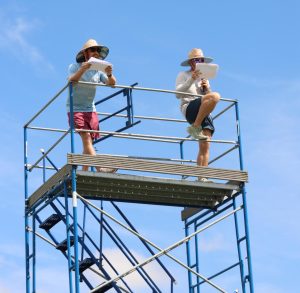
The band program is a complex community, with its many different classes, styles, activities and concerts. Yet, the question stands: How does Hagerty’s award-winning band achieve consistent success for so many years?
The answer is one that might not surprise many: Brad and Brian Kuperman, brothers, and co-band directors.
“They’re both really great band directors,” sophomore Caitlin Shaffer, the band vice president, said. “They really care about us all individually, which is incredible, and they do a lot for us.”
Brian Kuperman has been teaching band at Hagerty for 13 years. He received his degree from Stetson University. He began like most band students, starting in middle school on the alto saxophone, which he continued as his main instrument through high school and college.
Brad Kuperman followed a similar path to his brother. He started playing the saxophone before middle school and continued with that instrument. This love for music motivated him to get a degree in music education and start teaching at Hagerty, just like his brother.
“I’ve always enjoyed music,” Kuperman said. “And I enjoy watching students interact with each other, [see] the friends they create, the groups they start to create.”
Despite the similarities in their appearance, the Kupermans’ differences stand out to students.
“I would say Mr. K tends to make more jokes. And people would describe Mr. Kuperman as more serious,” junior Antonina Hoffman said.
Conclusion
Whether it is a connection with the Kupermans, a desire to perform with the rest of their section and band or just a love for music, students have a number of reasons to make band a part of their yearly schedule.
“Even though it can be tedious, [band is] still fun because I’m [playing] with people I know,” sophomore Jonathan Nevarez said. “It’s just a good experience.”

